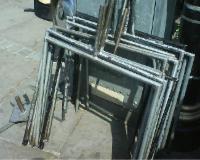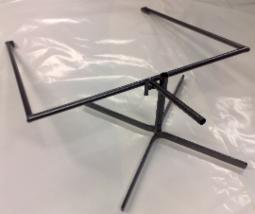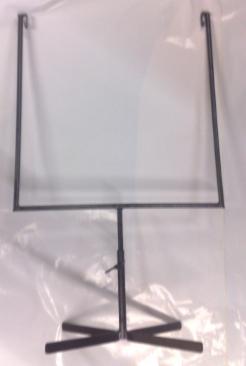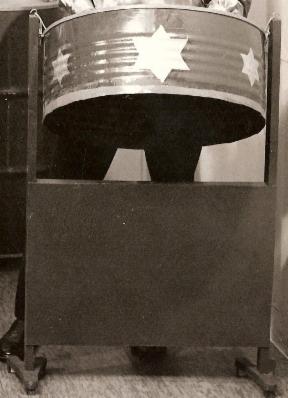Stands

Before the innovation of steelpan stands (early 1950s) the players would put a strap on either side of the pan, then place the strap around their necks. This method for suspending the pan became known as pan around the neck. It gave the players the opportunity to play with two sticks instead of holding the pan with one hand and playing with the other. The freedom also allowed them to move freely in the carnival parades. The term used for pan around the neck is now Single Pan Bands.
Playing the pans on stands allows the notes to resonate more freely. If you have a pan you can try this by putting the pan on the floor and playing it, then put it on a stand and play it again. There is a noticeable difference in the sound produced.



The wooden stands are fixed.

The metal stands are height adjustable, making them more popular.


Pan Rack (Pan Wagon): a large mobile structure used to suspend the steel pans. It can be made to have a single or double tier. The rack is usually covered to protect the instruments from the heat of the sun. The cover is called a canopy.
These racks are used by large bands to transport the instruments during carnival processions and are also believed to amplify the sound of the bands.